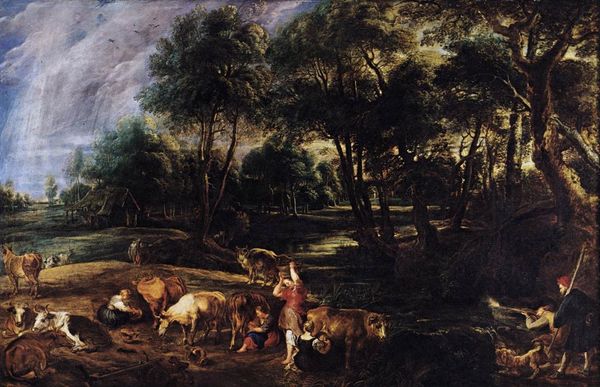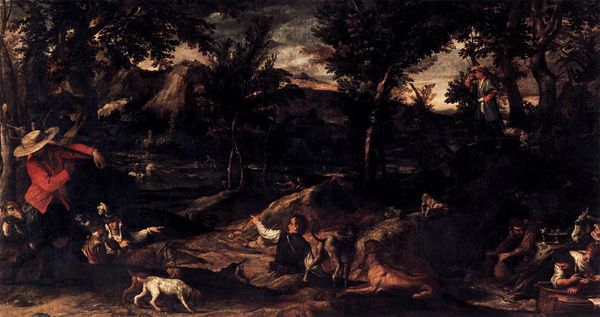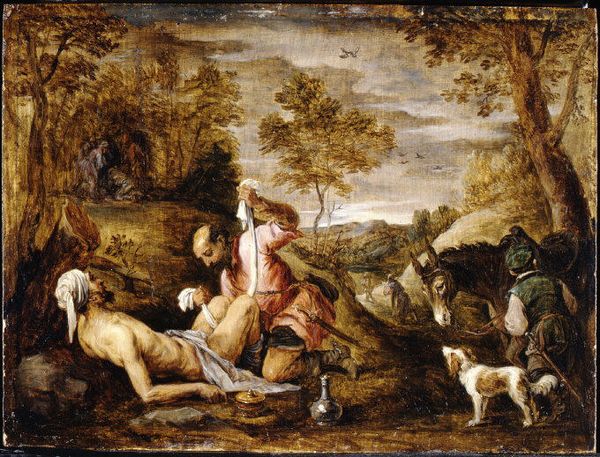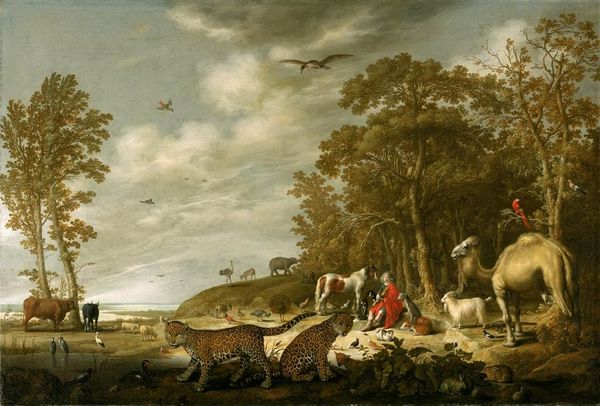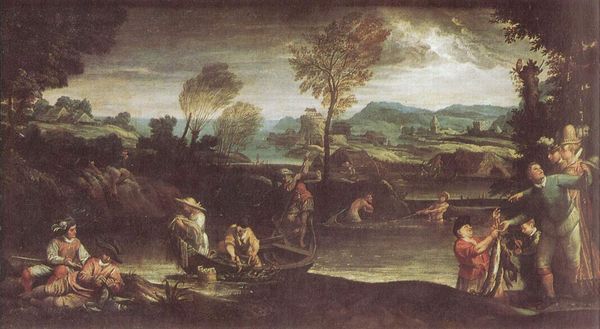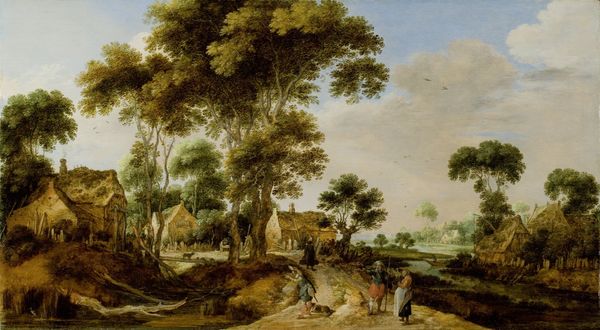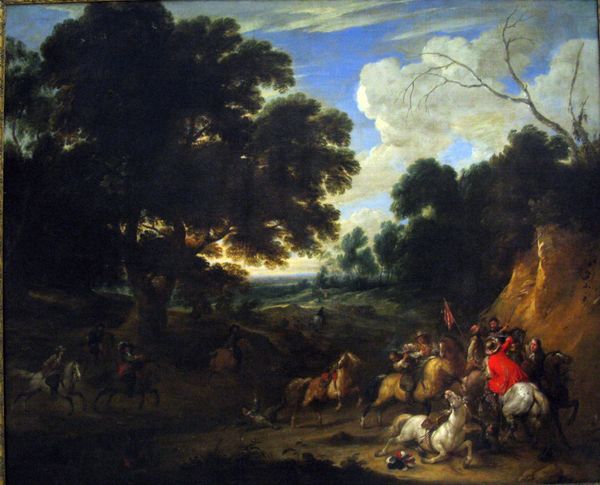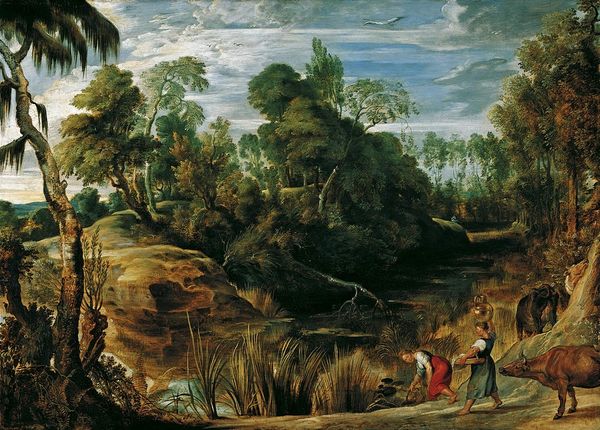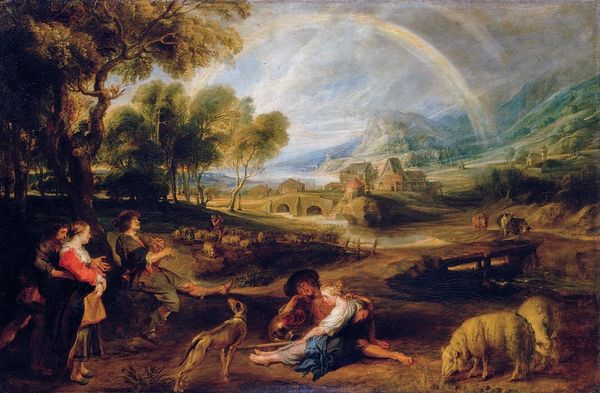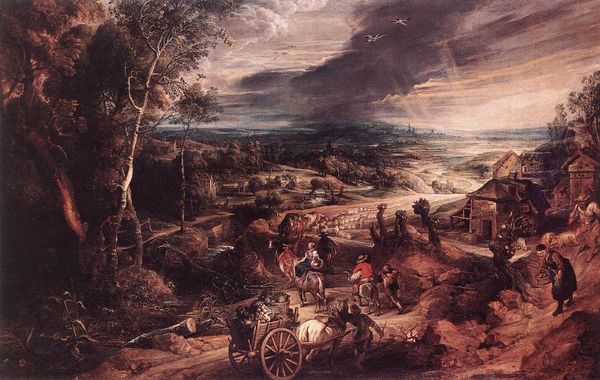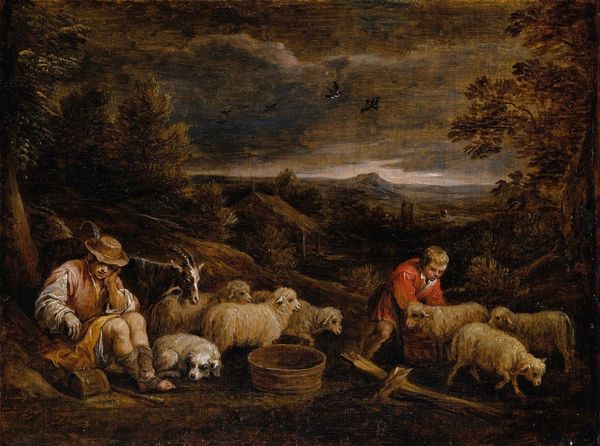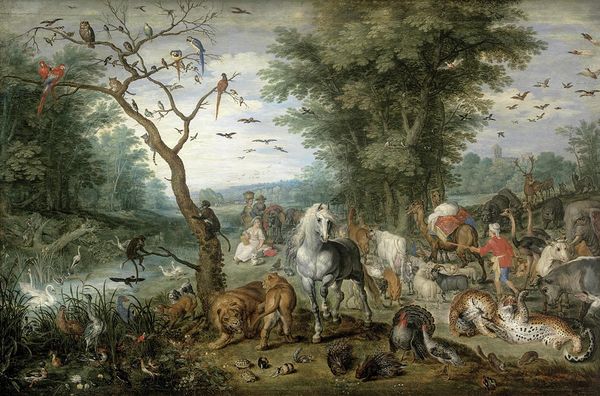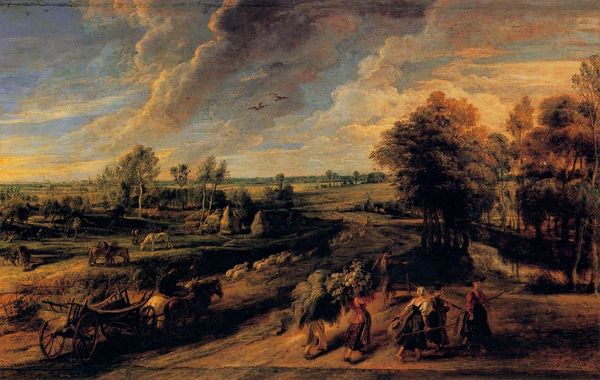
painting, oil-paint
#
baroque
#
painting
#
oil-paint
#
landscape
#
figuration
#
genre-painting
#
realism
Copyright: Public domain
Curator: Immediately, I'm drawn to the weight of those gathering storm clouds against the pale hides of the grazing cattle, a somber palette defining the scene. Editor: That's an astute observation. What we have here is "Farm at Laken" painted in 1618 by Peter Paul Rubens, who you might be more accustomed to encountering with paintings of a historical or religious vein, this oil on canvas instead shows an interest in working life. Curator: Working life is right—it's interesting to see Rubens exploring the materiality of everyday labor in a seemingly idealized landscape. Consider the clothing of the women in the foreground, perhaps alluding to the labor of creating the dye of their very textiles? It blurs lines of pure artistic expression and raw craftwork. Editor: Exactly. The women, presumably dairymaids, actively engaging in their work challenge this idealized landscape narrative, grounding the painting in lived reality. We can also interpret the looming church structure in the back as symbolic—religion influencing this idyllic world in both social and material ways. Curator: I notice how Rubens employs impasto to give the cows and human figures their realistic bulky shapes, which seems to assert the physical nature of this labor as well. He wasn’t merely interested in pictorialism, but the actual means of creation too, like any laborer involved. Editor: His signature Baroque style is apparent through movement in the leaves and dramatic sky, contrasting beautifully with realism found in animals and laborers. But the painting hints at power structures during this time, even those typically erased or unseen in conventional history, such as female agricultural workers or domestic creatures in symbiosis with labor on farmland. Curator: Do you see the almost casual arrangement of the working apparatus, and even that fallen bird to the left? I am intrigued by Rubens' apparent lack of rigid, traditional art hierarchies. I bet he considered the canvas a factory as much as any location in town! Editor: A provocative notion, and very possible. But it also speaks to a burgeoning sense of naturalism seeping through even courtly artistic circles, giving viewers insight into labor systems from multiple vantage points and potentially critiquing aristocratic notions by displaying them to the higher class in the comfort of their royal spaces, considering that today the work resides in Buckingham Palace in London. Curator: To bring us full circle, the scene seems more of a somber statement of production—how wealth relies on labor both human and beast. I walk away from this piece thinking differently of just artistic creation itself, and all the work and people in between! Editor: Well put. It reminds me to critically examine narratives and identities often hidden from art historical canons and in real time too. The power of perspective changes with each viewer, just as time changes the context surrounding these laborers' livelihoods over centuries.
Comments
No comments
Be the first to comment and join the conversation on the ultimate creative platform.
